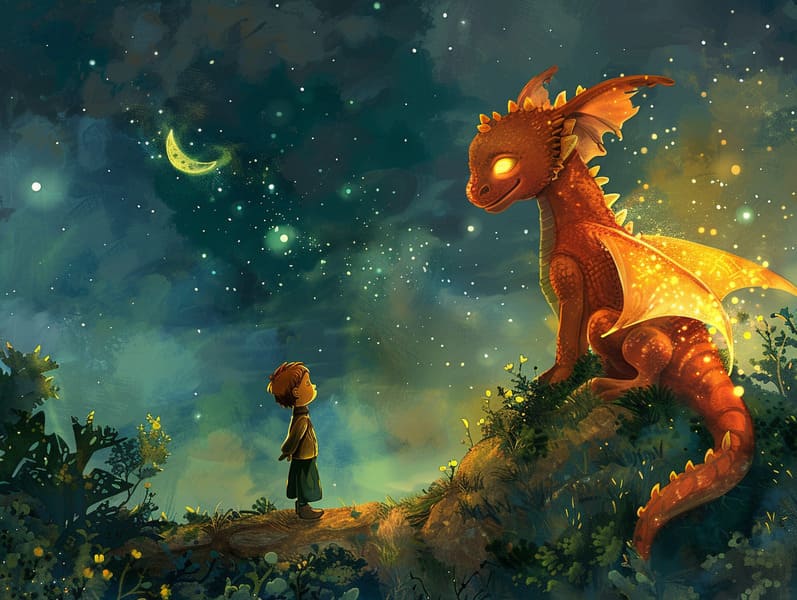
Historical fairy tales have long histories. These tales have been spoken from one generation to the next well before they were ever published. They arose from a variety of societies, including Western traditions. They were initially narrated among older generations, often carrying themes and messages relevant to the societal norms and beliefs of the time.
The Brothers Grimm, Jacob and Wilhelm Grimm, were among the first to compile and release many of these beloved tales. Their compilation, "Grimm's Folk Tales," included tales like "The True Bride," "Hansel and Grethel," and "The True Story of Snow White," which have since become staples in the world of famous fairy tales. Similarly, the Danish author's magical fairy tales, such as "The Mermaid," and "The Duckling that Could," have enchanted hearts worldwide, ensuring their place in the pantheon of timeless fairy tales.
Though they are old, these tales remain as important as ever, especially as bedtime stories for kids. These fantastical tales are now available in diverse formats, including colorful picture books, delightful animations, and free fairy tales online.
Their ongoing significance can be credited to several captivating elements:
Valuable Lessons: Ancient fairy tales often illustrate important moral lessons. Stories like "The Boy Who Cried Wolf" teach the significance of truthfulness, while "The Hare and the Tortoise" show the qualities of steadfastness and humility. These narratives offer the young clear distinctions between ethical and unethical, building their moral compass in a tender yet profound way.
Compassion and Insight: Timeless fairy tales frequently present figures facing challenges and struggles, inspiring listeners to empathize with their struggles and root for their triumphs. For instance, "Beauty and the Beast" conveys the value of valuing inner qualities to understand the real person of a individual, fostering perception and awareness.
Cultural Insights: Many classic fairy tales are saturated in the cultural contexts from which they were born. Immersing in these stories can provide informative snapshots into different societies, promoting a sense of international awareness and perception.
Fantasy and Innovation: The supernatural elements in classic fairy tales—fairy godmothers—provoke children’s innovations. These narratives carry readers to enchanted realms, boosting creative dreams and a sense of awe that continues a lifetime.
Old fairy tales are not only charming but also instructive. They act as enchanted tools in nurturing various cognitive and affective skills in young readers. When timeless fairy tales are narrated, they develop language skills by showing new word meanings and complex sentence structures. This practice also strengthens auditory skills and mindfulness, as little ones listen intently, anticipating to see what happens next.
Furthermore, discussing the themes and characters of timeless fairy tales can improve thought processes and analytical skills. The young are taught to discern patterns, expect results, and make sense of cause and effect. These explorations also ease little ones utter their thoughts and feelings, promoting their emotional intelligence.
In today’s high-tech era, the accessibility of digital storybooks has made these tales more accessible than ever. Web platforms and software make available broad selections of timeless fairy tales that can be seen or played anytime, anywhere. Fairy tales narrated are particularly well-liked, making available an interactive method for the young to immerse in these enchanting tales. Narrated books and narrated videos carry characters and settings to life, often supported by delightful background sounds and melodies that enhance the narrative adventure.
The lasting appeal of traditional fairy tales lies in their ability to modify to the present while retaining their basic principles. Contemporary retellings of these fairy tales often bring in more multicultural figures and modern settings, making them familiar to today’s audience. However, the underlying themes of daring, generosity, and fairness remain unchanged, continuing to connect with young readers of all ages.
Classic fairy tales also offer a sense of serenity and understanding. They furnish a well-structured narrative with a evident beginning, middle, and end, often wrapping up with the wrap-up of conflicts and the triumph of virtue over vice. This reliability can be reassuring for the young, furnishing a sense of stability in an constantly changing world.
Old fairy tales continue to bewitch and educate new generations, maintaining their captivation and meaningfulness in modern society. As kids' bedtime tales, they bestow a perfect blend of magic and knowledge, promoting moral values, empathy, and creativity. The presence of web-based fairy tales and the in demand status of fairy tales read out loud assure that these timeless narratives remain reachable to new generations.
By protecting and sharing these narratives, we continue to recognize the rich tapestry of mythology and cultural heritage. Whether you are seeing a colorful picture book, accessing a internet collection, or playing an voice book, the mystique of popular fairy tales is always within reach. These stories remind us of original fairy tales for bedtime the endless effect of fairy tales and its ability to hold us together across generations and cultures.
Regardless if you are browsing a colorful picture book, seeing a online library, or listening to an audiobook, the grace of famous fairy tales is always within reach.
These narratives demonstrate of the invariable essence of tales and its ability to unify us across centuries and lands, creating a bond that delights and instructs alike.